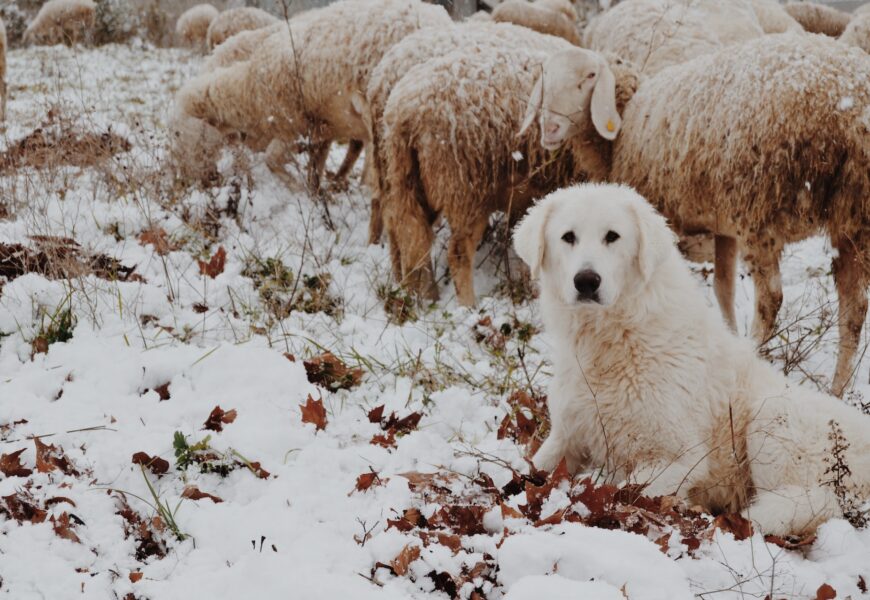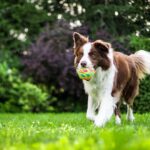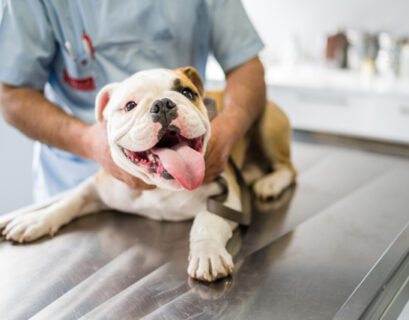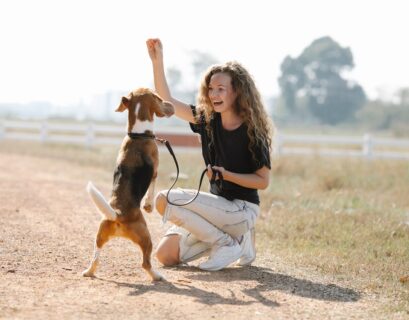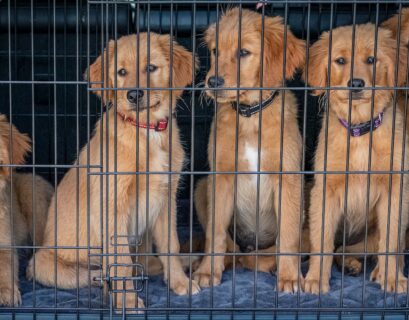Dive into the World of Dog Breeds and Discover Their Fascinating Characteristics!”
Key Takeaways:
- Dog breeds come in diverse shapes, sizes, and personalities, shaped by centuries of selective breeding.
- Understand a breed’s traits and needs to find the perfect match for your lifestyle and preferences.
- Responsible dog ownership involves proper care, training, and socialization.
- Embrace diversity and appreciate the unique qualities of each breed.
- Promote responsible ownership and understanding rather than discriminatory legislation.
- Dogs enrich our lives with unwavering loyalty, boundless love, and joyful companionship.
Step into the enchanting world of man’s best friend, where a diverse tapestry of dog breeds awaits with wagging tails and boundless affection. From the loyal and spirited Labrador Retriever to the elegant and regal Siberian Husky, each breed comes with its unique set of traits and quirks that have captivated the hearts of millions.
In the enchanting universe of dog breeds, a remarkable diversity exists, with each breed boasting a distinct personality, appearance, and purpose. The sheer variety of dogs is awe-inspiring, from the majestic and noble Great Dane to the pint-sized and sassy Chihuahua. As we journey through this exploration, we will not only revel in the charm and charisma of well-known breeds like the playful Labrador Retriever and the dignified German Shepherd but also venture into the lesser-known territories of rare and unique breeds, such as the intriguing Norwegian Lundehund and the ancient Azawakh.
The American Kennel Club (AKC) and international breed standards have provided valuable classification systems, dividing dogs into groups based on their shared traits and functions. Sporting dogs, toy dogs, working dogs, herding dogs, hound dogs, terrier dogs, and non-sporting dogs encompass the vast range of canine companionship, each offering something distinctive to the world of dog ownership.
Yet, beyond the surface appeal and endearing appearances, the individual breed characteristics truly define the essence of each dog. Size and weight range determine how these canine companions fit into our homes and hearts. Temperament and personality traits are vital in establishing strong bonds and compatibility with their human counterparts. Understanding their grooming and exercise needs ensures their well-being and happiness. Trainability and intelligence influence the ease of learning new commands and tasks. And, like any living being, dogs are not without their vulnerabilities, with each breed having its own set of common health issues that responsible owners must be aware of and prepared to address.
Classifying Dog Breeds: The American Kennel Club (AKC) and International Standards
With their diverse traits and characteristics, dog breeds captivate the hearts of dog lovers worldwide. Organizations like the American Kennel Club (AKC) and international authorities have classified dog breeds into various groups with unique qualities and purposes to bring order to this canine abundance. This classification system serves as a reference for breed identification and provides valuable insights into each group’s history, behavior, and traits.
The American Kennel Club (AKC) Breed Groups
The American Kennel Club (AKC), established in 1884, is one of the most prominent organizations dedicated to dog breed classification and standardization in the United States. The AKC recognizes over 190 dog breeds, divided into seven groups based on shared characteristics and functions.
1. Sporting Dogs
Sporting dogs, as the name suggests, were originally bred to assist hunters in locating, flushing out, and retrieving game birds. These dogs boast an instinct for the field, excelling in hunting, retrieving, and water sports. Among the most beloved and popular sporting breeds are:
a. Labrador Retriever
Labrador Retrievers, often called Labradors or Labs, have secured their spot as the most popular dog breed in the United States for several consecutive years. Their friendly disposition, intelligence, and loyalty make them exceptional family pets and working dogs.
b. Golden Retriever
The Golden Retriever, renowned for its warm golden coat and gentle temperament, is another beloved member of the sporting group. They are highly trainable and excel in obedience, therapy work, and assisting individuals with disabilities.
c. German Shorthaired Pointer
With its sleek coat and versatile hunting skills, the German Shorthaired Pointer is a powerhouse in the field. Originally bred in Germany, this breed is renowned for its endurance, intelligence, and unwavering loyalty to its owners.
2. Toy Dogs
Toy dogs, pint-sized companions with big personalities, were historically bred for their small size and affectionate nature. These breeds thrive in urban settings and make excellent lap dogs and companions. Some popular toy breeds include:
a. Chihuahua
The Chihuahua, named after the state of Chihuahua in Mexico, is the smallest dog breed in the world. Despite their tiny stature, Chihuahuas pack a big attitude and are fiercely loyal to their owners.
b. Pomeranian
Pomeranians, known for their fluffy double coat and foxy expression, are charming and outgoing little dogs. They are descendants of larger sled-pulling Spitz breeds and have retained their lively spirit and intelligence.
c. Yorkshire Terrier
The Yorkshire Terrier, often called the “Yorkie,” is an aggressive and affectionate breed with a luxurious, floor-length coat. Originally bred for vermin control in textile mills, Yorkies have since become popular as glamorous companions.
3. Working Dogs
Working dogs, bred for their strength, intelligence, and versatility, have a history of assisting humans in various tasks. These breeds excel in guarding, pulling sleds, search and rescue, and police work. Prominent working breeds include:
a. German Shepherd
The German Shepherd, prized for its intelligence and versatility, is widely used as a police, military, and service dog. With its loyal and protective nature, the German Shepherd is also a cherished family companion.
b. Siberian Husky
The Chukchi people of Siberia bred the Siberian Husky, known for its striking appearance and endurance, as sled dogs. Today, they remain popular as both working dogs and beloved family pets.
c. Boxer
The Boxer, with its muscular build and expressive face, is renowned for its playful and energetic nature. They make loyal and devoted family members while excelling in obedience and agility competitions.
International Dog Breed Standards
While the AKC is a leading authority in the United States, international organizations have their own breed classification systems and standards. The Fédération Cynologique Internationale (FCI), based in Belgium, is a prominent international organization.
The FCI recognizes and classifies dog breeds from various countries around the world. Each breed is assigned to a specific group based on its function and characteristics, following standards established by its country of origin. This international classification ensures uniformity in breed identification and promotes global understanding and cooperation among dog enthusiasts.
In conclusion, the classification of dog breeds by organizations such as the American Kennel Club and international authorities provides an invaluable framework for understanding the diverse world of dogs. From sporting dogs with a natural talent for hunting to toy dogs with endearing charm and working dogs with incredible strength and intelligence, each group showcases the remarkable qualities that make dogs such cherished companions and invaluable partners in human lives.
Popular Dog Breeds and Their Traits
Understanding the traits and characteristics of popular dog breeds allows prospective owners to make informed decisions when choosing a canine companion. Each breed comes with its unique set of qualities that cater to various lifestyles and preferences. Let’s delve deeper into some of the most beloved and well-known dog breeds and discover the traits that make them exceptional companions.
Sporting Dogs
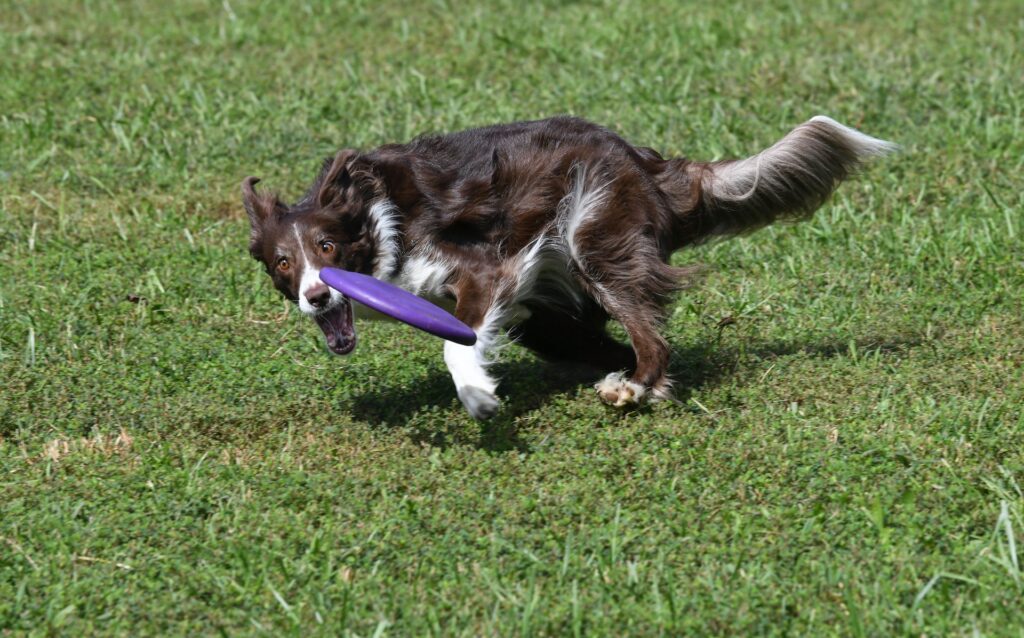
1. Labrador Retriever
Labrador Retrievers have earned the title of America’s sweetheart with their friendly and outgoing personalities. Their intelligence and willingness to please make them highly trainable, making them excellent choices for families and first-time dog owners. Labs are excellent hunting and retrieving companions and excel in therapy, service, and search and rescue roles. Their generous nature and love for human interaction make them ideal family pets, bonding effortlessly with adults and children.
2. Golden Retriever
Golden Retrievers, known for their affectionate nature and gentle temperament, form deep and lasting bonds with their families. These highly social dogs thrive on companionship and make loyal and devoted friends. Their eager-to-please attitude and intelligence facilitate training, making them adept at various activities like obedience, agility, and competitive sports. Beyond their exceptional companionship, Golden Retrievers are often employed as guide dogs for the visually impaired and as therapy dogs due to their empathetic and comforting nature.
3. German Shorthaired Pointer
German Shorthaired Pointers, a breed renowned for its versatility and athleticism, have a natural talent for pointing and retrieving game in the field. Their high energy levels and need for regular exercise make them ideal companions for active individuals and families. These intelligent and driven dogs thrive on mental and physical stimulation and excel in agility, tracking, and dock diving. Due to their strong hunting instincts, they require proper training and early socialization to ensure a well-rounded and well-behaved pet.
Toy Dogs
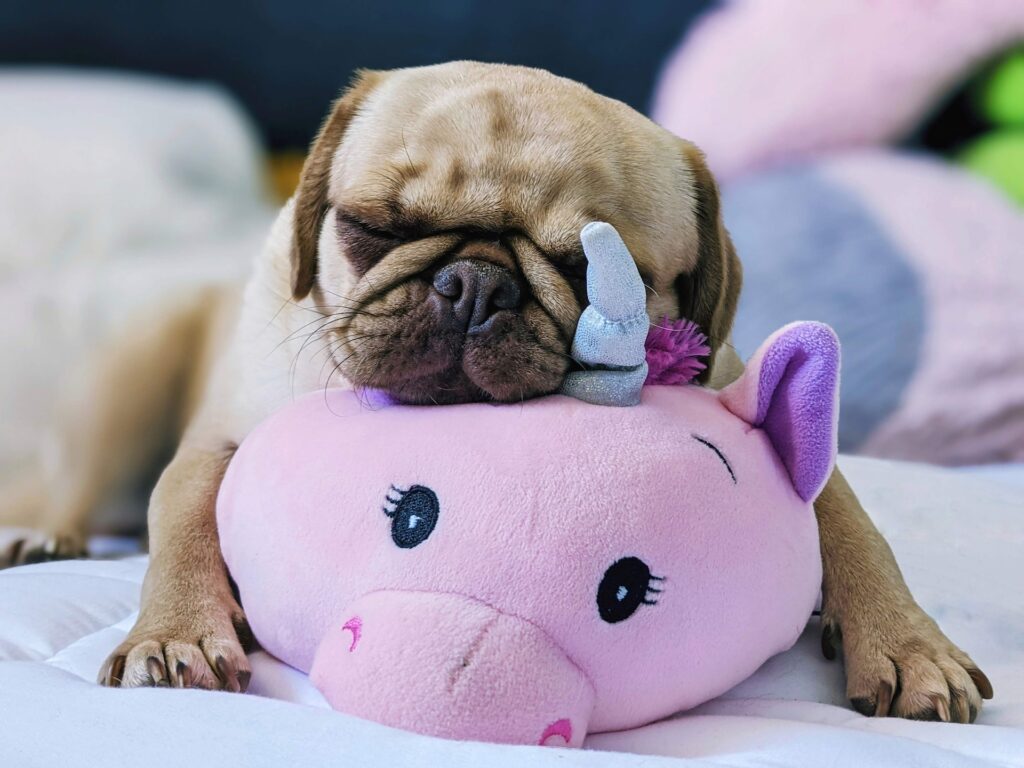
1. Chihuahua
The Chihuahua, despite its tiny size, possesses a larger-than-life personality. These spunky little dogs are fiercely loyal to their owners and can become protective of their families. Chihuahuas tend to bond closely with one person and can be reserved around strangers. While they are known for being sassy and stubborn, early socialization and training can help them develop into well-mannered companions. Due to their small size, Chihuahuas are best suited for households without very young children to prevent accidental injuries.
2. Pomeranian
Pomeranians, often called “Poms,” are known for their fluffy double coats and vibrant personalities. Despite their diminutive stature, Pomeranians are fearless and confident dogs, often unaware of their small size. They are highly alert and make excellent watchdogs, alerting their owners to potential intruders. Poms thrive on attention and can be affectionate with their families, making them loving companions. Regular grooming is essential to maintain their plush coat in top condition.
3. Yorkshire Terrier
The Yorkshire Terrier, or “Yorkie,” is a charming and elegant toy breed with a luxurious floor-length coat. Beneath their glamorous appearance lies an aggressive and energetic spirit. Yorkies are known for their strong-willed nature, requiring consistent training to prevent stubborn behavior. Despite their small size, they have a surprisingly bold and courageous disposition. Yorkies are well-suited to apartment living due to their compact size and relatively low exercise needs.
Working Dogs
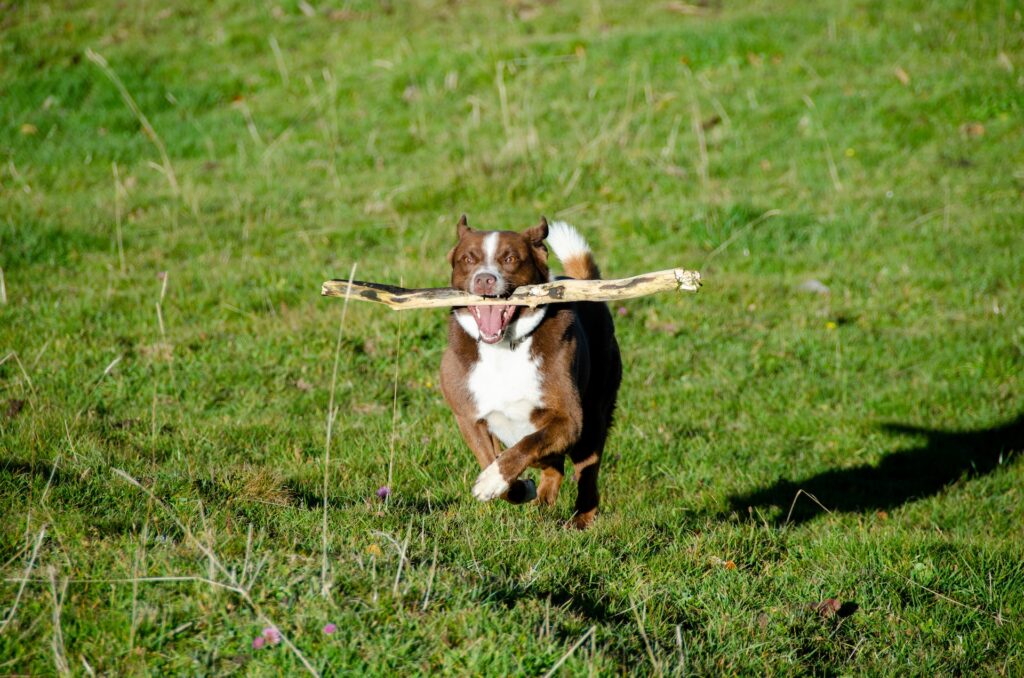
1. German Shepherd
German Shepherds, celebrated for their versatility and intelligence, are among the most popular working breeds. Their instincts for protection, tracking, and herding have made them valuable assets in police and military roles. German Shepherds are fiercely loyal to their families and form strong bonds with their owners. They are highly trainable and thrive on challenging mental and physical activities. With their protective nature, they make excellent guard dogs, yet their gentle and affectionate side makes them beloved family pets.
2. Siberian Husky
Siberian Huskies, known for their striking appearance and endurance, are descendants of sled-pulling dogs that have been companions to the indigenous people of Siberia for centuries. These high-energy dogs require regular exercise and mental stimulation to prevent boredom-related behaviors. Huskies are social and pack-oriented, making them excellent playmates for families with other dogs. Due to their strong prey drive and independence, Huskies need consistent training and a secure environment.
3. Boxer
Boxers are renowned for their playful and exuberant personalities, making them perpetual puppies at heart. Their boundless energy and affectionate nature make them ideal playmates for families with active children. Boxers are natural guardians who instinctively protect their loved ones if they sense a threat. Their intelligence and eagerness to please facilitate training, although their exuberance can sometimes lead to stubbornness. Early socialization is essential to ensure they develop into well-behaved and well-mannered companions.
The traits and characteristics of each breed play a significant role in determining the ideal match between a dog and its owner. By understanding the distinct qualities of popular dog breeds, prospective owners can make informed decisions, ensuring a harmonious and fulfilling companionship that will last a lifetime.
Herding Dogs

1. Border Collie
Border Collies, often regarded as the most intelligent dog breeds, are renowned for their exceptional herding abilities. Bred to work closely with shepherds, these dogs possess an innate talent for controlling livestock with their intense gaze, known as the “herding eye.” Border Collies are brilliant herders and excel in dog sports such as agility and obedience. Their boundless energy and eagerness to work make them best suited for active households where they can engage in mentally stimulating activities.
2. Australian Shepherd
Despite its name, the Australian Shepherd was developed in the United States. These dogs are highly regarded for their versatility and agility in herding livestock. Australian Shepherds are characterized by their striking merle coat patterns and vibrant eyes, with their intelligence and eagerness to please, they thrive in dog sports and activities that challenge their minds. Highly active dogs require regular exercise and mental stimulation to stay content and well-behaved.
3. Pembroke Welsh Corgi
With their short legs and elongated bodies, Pembroke Welsh Corgis may appear unconventional as herding dogs, but they are indeed skilled at moving cattle. Hailing from Wales, these charming dogs have captured the hearts of many with their affectionate and outgoing nature. Despite their small stature, Corgis possess a strong herding instinct and may attempt to herd other pets or family members. Their love for play and fun makes them wonderful family companions, although they require regular exercise to avoid weight gain.
Hound Dogs
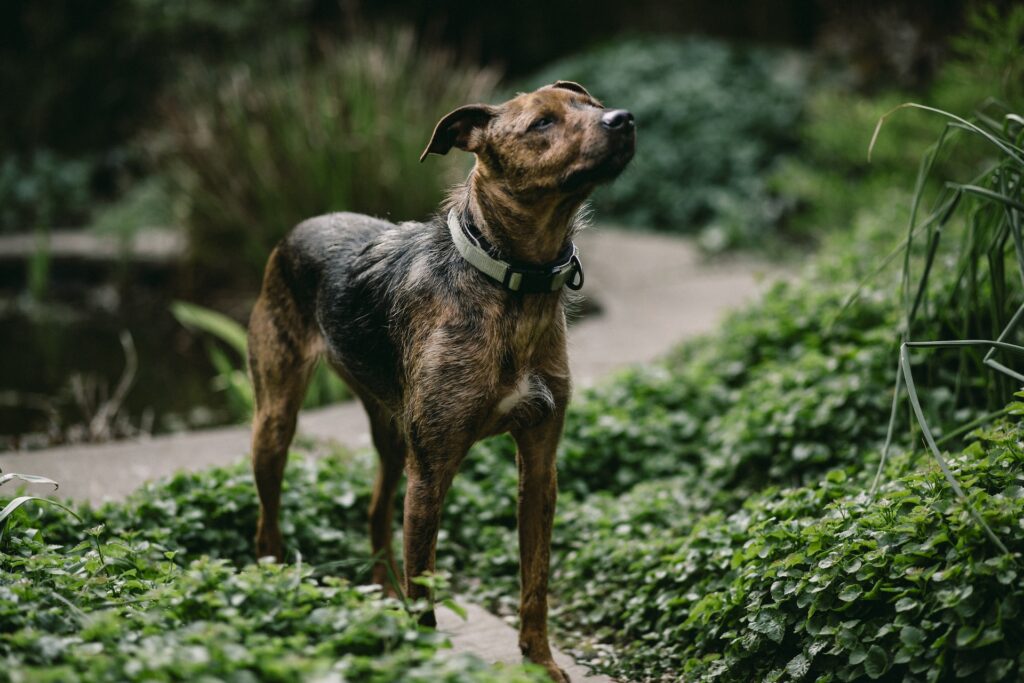
1. Beagle
With their soulful eyes and gentle demeanor, beagles are beloved family dogs known for their exceptional sense of smell. Originally bred as scent hounds, Beagles are expert trackers, making them valuable in search and rescue operations. Their friendly and sociable nature makes them excellent companions for families and pets. Beagles have a curious streak and may follow their nose, so keeping them in a secure environment is essential.
2. Greyhound
With their sleek and athletic build, Greyhounds are well-known for their incredible speed and grace. Historically bred for coursing and racing, they are one of the fastest dog breeds. Despite their reputation as racing dogs, Greyhounds are gentle and affectionate companions that thrive in calm, relaxed environments. They have a calm demeanor and are generally well-behaved, making them well-suited for apartment living.
3. Dachshund
With their long bodies and short legs, Dachshunds are affectionately called “wiener dogs” or “sausage dogs.” Originally bred in Germany for hunting badgers, Dachshunds are tenacious and courageous. Despite their small size, they have big personality and are quite vocal when they sense danger. Dachshunds can be stubborn, so early training and socialization are essential to ensure they get along well with other pets and children.
Terrier Dogs
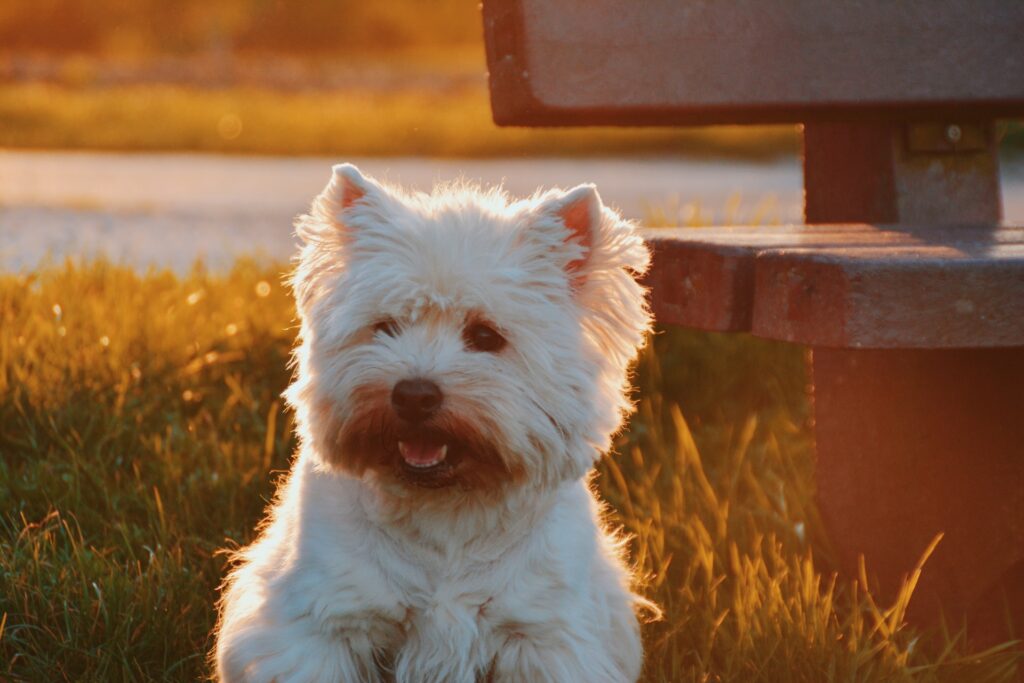
1. Jack Russell Terrier
With their boundless energy and intelligence, Jack Russell Terriers are spirited and lively dogs known for their adventurous nature. Originally bred for hunting foxes and other small game, Jack Russells have a strong prey drive and may chase smaller animals. They excel in activities like agility and flyball, as they love challenges and mental stimulation. Due to their high energy levels, they require regular exercise and playtime.
2. Bull Terrier
Bull Terriers, with their distinctive egg-shaped heads and muscular bodies, have a playful and clownish personality. They form strong bonds with their families and can be loyal and protective. Bull Terriers are known for their mischievous streak and may engage in playful antics to entertain themselves. Proper training and early socialization are crucial to ensure they become well-mannered pets.
3. Scottish Terrier
Scottish Terriers, or “Scotties,” are small but sturdy dogs with a dignified and independent character. Originating from Scotland, these dogs, including rodents, were bred to hunt small game. Scotties are loyal and devoted to their families but can be reserved around strangers. Despite their independent nature, they thrive on companionship and enjoy spending time with their loved ones.
Non-Sporting Dogs
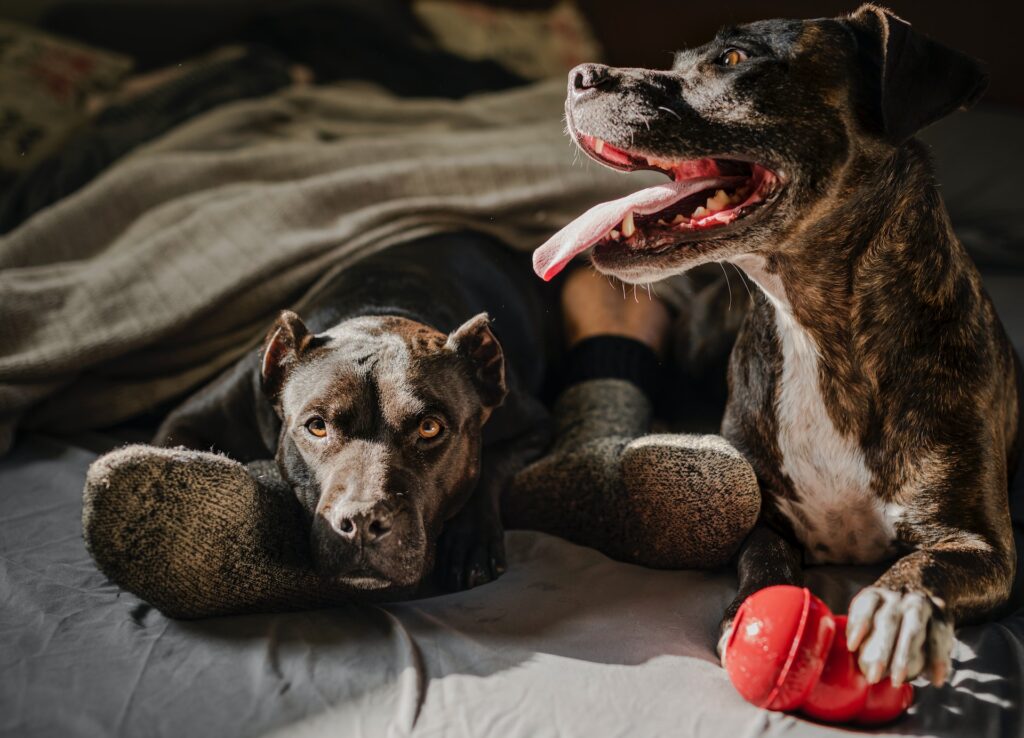
1. Bulldog
Bulldogs, with their distinctive wrinkled face and sturdy build, have a gentle and affectionate temperament. Originally bred for bull-baiting, Bulldogs have evolved into docile and loving companions. They are great with children and make excellent family pets. Bulldogs are not high-energy dogs and are content with moderate exercise and many cuddles.
2. Poodle
Poodles, often associated with elegance and intelligence, are highly versatile dogs with hypoallergenic coats. They come in three sizes: standard, miniature, and toy. Poodles are renowned for their intelligence and are among the easiest dogs to train. They excel in dog sports like agility and obedience, and their non-shedding coats make them popular choices for families with allergies.
3. Shiba Inu
Shiba Inus, hailing from Japan, are known for their fox-like appearance and spirited nature. Despite their small size, they have a strong and confident personality. Shiba Inus are independent and may have a stubborn streak, requiring consistent and patient training. They are best suited for experienced dog owners who can provide the structure and boundaries that these spirited dogs need.
Understanding Breed Characteristics
As prospective dog owners explore the vast array of dog breeds, it becomes crucial to delve into the intricacies of breed characteristics. Each breed has its unique traits, influencing everything from their size and temperament to grooming needs and potential health concerns. By understanding these characteristics, potential dog owners can ensure a harmonious and fulfilling relationship with their chosen canine companion.
Size and Weight Range
Dog breeds vary greatly in size, ranging from the tiniest Chihuahua, weighing a mere few pounds, to the majestic Great Dane, tipping the scales at over 100 pounds. Size and weight influence various aspects of dog ownership, including living arrangements, exercise requirements, and even the amount of food required. Smaller breeds often adapt well to apartment living and require less space to move around, while larger breeds may thrive in homes with ample room to roam.
Moreover, the size of a dog can impact the potential risks associated with certain activities, such as jumping from high surfaces, playing with children, or interacting with smaller pets. A smaller and more manageable breed might be preferable for families with young children or seniors.
Temperament and Personality Traits
Breed temperament plays a significant role in how dogs interact with their owners and the world around them. Temperament traits can vary widely between breeds; even individual dogs within the same breed may exhibit distinct personalities. Some breeds, like Golden Retrievers and Labrador Retrievers, are known for their friendly and affectionate nature, making them excellent family pets and therapy dogs. On the other hand, some breeds, such as the Shiba Inu or the Bull Terrier, can be more independent and may require patient training and socialization to ensure a well-adjusted and well-behaved companion.
The energy levels of different breeds also influence the amount of exercise and mental stimulation they need. High-energy breeds, such as Border Collies and Siberian Huskies, thrive on activities that challenge their minds and bodies. In contrast, low-energy breeds, like Bulldogs and Pugs, are content with shorter and more relaxed play sessions.
Grooming and Exercise Needs
Grooming requirements can vary greatly among dog breeds. Some breeds, such as Poodles and Yorkshire Terriers, have non-shedding coats that require regular grooming to prevent matting and maintain their pristine appearance. Others, like Beagles and Labrador Retrievers, have short coats that shed moderately, necessitating less grooming but more frequent brushing to control shedding.
Exercise needs are closely tied to a breed’s energy level and purpose. Working and sporting breeds, like the German Shepherd and the Golden Retriever, thrive on regular physical activity and mental stimulation. These breeds may become bored and engage in destructive behaviors without sufficient exercise. Conversely, less active breeds like the Bulldog and the Shih Tzu have lower exercise requirements and can be content with moderate walks and playtime.
Trainability and Intelligence
The trainability and intelligence of different breeds influence the ease with which they can learn commands and adapt to new situations. Highly intelligent breeds, such as the Border Collie and the Poodle, excel in training and quickly grasp new tasks. These breeds often thrive on mental challenges and are well-suited for dog sports and activities that stimulate their minds.
On the other hand, some breeds may be more independent and less motivated by pleasing their owners. While this does not imply they are less intelligent, training might require more patience and consistency. Understanding a breed’s trainability can help owners tailor their training methods to suit the dog’s unique needs.
Common Health Issues
Each breed is prone to specific health conditions due to genetic predispositions and breed characteristics. Responsible breeders work to minimize the occurrence of these health issues through selective breeding and health testing. Potential dog owners should be aware of the common health problems associated with their chosen breed and take preventive measures to ensure their dog’s well-being.
For instance, large breeds like the Labrador Retriever and the German Shepherd may be susceptible to joint issues, such as hip dysplasia. Brachycephalic breeds, like Bulldogs and Pugs, may experience respiratory problems due to their short noses. Being informed about breed-specific health concerns allow owners to be proactive in providing proper care, regular check-ups, and a healthy lifestyle.
Choosing the Right Breed for Your Lifestyle
Selecting the perfect canine companion involves more than falling in love with a breed’s appearance; it requires thoughtful consideration of one’s lifestyle, living arrangements, and personal preferences. Each dog breed has unique needs and characteristics, and finding a match that aligns with an individual’s or family’s lifestyle is crucial for fostering a happy and fulfilling relationship. Let’s explore the key factors when choosing the right breed for your lifestyle.
Considering Your Living Situation
The first step in selecting a dog breed is evaluating your living situation. Smaller breeds like the Chihuahua or the Yorkshire Terrier may be more suitable for those residing in apartments or smaller homes due to their compact size and lower exercise requirements. On the other hand, families with more substantial living spaces, yards, or rural areas may find larger and more active breeds, such as the Labrador Retriever or the Australian Shepherd, better suited to their environment.
Additionally, some living arrangements may restrict pet size or breed, so you must check with landlords or homeowner associations before bringing a dog into your home.
Matching Energy Levels
Harmonious cohabitation with a dog often depends on energy levels that match the owners. For individuals or families with active lifestyles, breeds that require more exercise and mental stimulation, like the Border Collie or the Siberian Husky, may be a perfect fit. Daily activities such as jogging, hiking, or engaging in dog sports will be enjoyable for both owner and dog.
Conversely, lower-energy breeds, such as Bulldogs or Greyhounds, may be more suitable companions for those with a more relaxed pace of life. These breeds are content with shorter walks and plenty of cuddle time on the couch.
Allergies and Shedding
Hypoallergenic dog breeds, like the Poodle or the Bichon Frise, are often recommended for individuals with allergies. These breeds produce fewer allergens and are less likely to trigger allergic reactions. Additionally, non-shedding breeds can benefit individuals who prefer a cleaner living space and wish to minimize the amount of pet hair around the home.
It is important to note that while hypoallergenic breeds may produce fewer allergens, no dog breed is entirely hypoallergenic. Before bringing a dog into your home, spending time with the breed and consulting with an allergist can help gauge potential allergic reactions.
Time and Commitment to Training
Every dog requires training and socialization to become a well-behaved and well-adjusted family member. However, the level of commitment required for training can vary depending on the breed’s intelligence and trainability.
Highly intelligent and trainable breeds, such as the Labrador Retriever or the German Shepherd, tend to pick up commands quickly and are eager to please their owners. They thrive in training sessions and may excel in obedience and dog sports.
Conversely, more independent breeds, like the Shiba Inu or the Afghan Hound, may require additional patience and consistency in training. While they can still learn, training may take more time and effort.
Understanding the time and commitment required for training and socialization is essential in setting realistic expectations and ensuring a positive and successful training experience for both the owner and the dog.
Lesser-Known and Rare Dog Breeds
There is a hidden treasure trove of lesser-known and rare canine companions, each with a distinct charm and history, in a world where well-known and popular dog breeds predominate. These breeds may not enjoy the same level of recognition as their more famous counterparts, but they possess fascinating qualities that captivate the hearts of those who have the privilege of knowing them. In this article, we will embark on a journey to explore four remarkable and lesser-known dog breeds: the Xoloitzcuintli, the Norwegian Lundehund, the Azawakh, and the Tibetan Mastiff.
Xoloitzcuintli (Mexican Hairless Dog)
The Xoloitzcuintli, often called the Xolo for short, is a truly ancient breed with a history of over 3,000 years. Ancient civilizations like the Aztecs and the Mayans revered the Xoloitzcuintli because of its distinctive appearance and perceived mystical qualities. This breed comes in three sizes – toy, miniature, and standard – and can be hairless or coated. Xolos are known for their calm and affectionate nature, forming strong bonds with their families. The hairless variety requires special care, including sun protection and moisturizing, to keep their skin healthy.
Norwegian Lundehund
The Norwegian Lundehund is a fascinating breed with some truly remarkable physical features. Bred in Norway to hunt puffins, this dog has unique adaptations that allow it to climb cliffs and squeeze into tight crevices. The Lundehund possesses six fully functional toes on each foot, a flexible neck that can bend backward, and ears that can fold shut to protect from debris while burrowing. Due to its isolated breeding history and near-extinction during World War II, the Norwegian Lundehund remains a rare and treasured breed today. They are known for their independent and energetic nature, making them ideal companions for active owners.
Azawakh
The Azawakh is an elegant and swift sighthound from West Africa, primarily in Mali, Niger, and Burkina Faso. The Azawakh is a sleek and graceful hunting vehicle that the Tuareg and other nomadic tribes have long used to hunt gazelles and other game. This breed is characterized by its slim and aerodynamic body, as well as its deep chest and long legs, which allow it to reach incredible speeds. Despite their hunting background, Azawakhs are gentle and loyal to their families. They can be reserved around strangers but form deep bonds with their owners.
Tibetan Mastiff
The Tibetan Mastiff is a majestic and imposing breed with a rich history in the mountains of Tibet and surrounding regions. Bred to guard livestock, homes, and monasteries, these dogs have an inherent sense of responsibility and protectiveness. Their thick double coat serves as insulation against the harsh Himalayan weather. Tibetan Mastiffs are known for their calm and composed demeanor but can be fiercely protective when their family or territory is threatened. This breed requires consistent training and socialization to ensure a well-behaved companion.
Preservation of Purebred Dogs vs. Crossbreeding
As dog breeds face various challenges, including genetic diversity and health issues, the debate between preserving purebred dogs and promoting crossbreeding has come to the forefront of discussions among dog enthusiasts and experts. Each approach offers distinct advantages and poses unique challenges, shaping the future of dog breeds and the world of responsible dog ownership.
The Controversy Surrounding Purebred Dogs
Preserving purebred dogs is rooted in maintaining the historical characteristics and traits that define each breed. Kennel clubs and breed organizations establish breed standards for purebred dogs, ensuring consistency in their appearance, temperament, and working abilities. Advocates of purebred dogs argue that these standards preserve the unique heritage and cultural significance of each breed and the predictability of their characteristics, which is beneficial for potential owners seeking specific traits in a companion.
However, pursuing breed purity has led to concerns regarding genetic diversity and the potential for inherited health issues. Due to historical bottlenecks, some breeds have a limited gene pool, leading to a higher risk of hereditary diseases and conditions. Responsible breeders prioritize health testing and ethical breeding practices to mitigate these concerns, but the issue remains controversial.
Benefits and Challenges of Crossbreeding
Crossbreeding, or hybrid breeding, involves mating two purebred dogs to produce a new generation of mixed-breed offspring. Proponents of crossbreeding argue that it can introduce genetic diversity, potentially reducing the prevalence of hereditary health issues that are more common in purebred lines. Crossbred dogs may also exhibit hybrid vigor, displaying increased vitality and resilience compared to their purebred parents.
Furthermore, crossbreeding can yield dogs with unique combinations of traits, making them appealing to owners seeking a blend of characteristics from different breeds. For instance, the Labradoodle (Labrador Retriever and Poodle mix) gained popularity for its hypoallergenic coat and friendly demeanor.
However, critics of crossbreeding raise concerns about the inconsistency in temperament and appearance among mixed-breed dogs. The variability in genetic traits may make it challenging for potential owners to predict a hybrid puppy’s size, coat type, or energy level. Additionally, responsible crossbreeding requires careful selection of parent dogs to ensure compatibility and desirable qualities in the offspring.
Responsible Dog Ownership and Breed-Specific Legislation
Regardless of whether a dog is a purebred or a crossbreed, responsible dog ownership is paramount. Understanding a dog’s breed-specific needs, exercise requirements, and potential health concerns is essential for providing a loving and nurturing home. Responsible owners prioritize proper training.
Meeting the Needs of Your Chosen Breed
Responsible dog ownership begins with selecting a breed that aligns with your lifestyle, living arrangements, and activity levels. As we’ve explored in the previous sections, each dog breed has unique traits, such as energy levels, grooming needs, and trainability. Matching the needs of your chosen breed with your capabilities and preferences ensures a happy and harmonious relationship.
For example, if you lead an active lifestyle and enjoy outdoor activities, a high-energy breed like the Norwegian Lundehund or the Azawakh may be an excellent fit for your adventurous spirit. On the other hand, if you prefer a more relaxed pace of life and have limited space, a lower-energy breed like the Tibetan Mastiff or the Xoloitzcuintli might be more suitable.
Responsible dog owners also prioritize regular veterinary care, proper nutrition, and exercise to keep their furry companions healthy. Understanding breed-specific health issues and being proactive in preventive care helps ensure your canine companion’s long and fulfilling life.
The Impact of Breed-Specific Legislation
Breed-specific legislation (BSL) refers to laws and regulations that target specific dog breeds based on their appearance rather than their behavior. BSL is often introduced in response to perceived safety concerns related to certain breeds, especially those perceived as aggressive. However, many experts argue that BSL is ineffective and unfair, as it fails to address the root causes of dog aggression, primarily related to irresponsible ownership and lack of proper training and socialization.
BSL may lead to the stigmatization and unfair treatment of certain breeds, resulting in breed discrimination and the euthanization of innocent dogs. Instead of focusing on breed-specific measures, responsible dog ownership practices, such as leash laws, mandatory spaying/neutering, and education on canine behavior, are more effective ways to promote public safety and responsible pet ownership.
The Future of Dog Breeds: Preservation and Evolution
As we look toward the future, efforts to protect endangered breeds and the impact of contemporary lifestyles on canine companions will shape dog breeds.
Efforts to Preserve Endangered Breeds
Endangered breeds like the Norwegian Lundehund face challenges maintaining genetic diversity and population numbers. Preservation efforts led by dedicated breed enthusiasts, responsible breeders, and breed clubs are crucial to safeguarding these rare breeds. Collaboration between breed organizations, geneticists, and veterinarians contributes to comprehensive breeding programs prioritizing health and genetic diversity.
The establishment of breed-specific rescue organizations also plays a vital role in rescuing and rehoming endangered breeds, ensuring they can thrive and find loving homes.
Influence of Modern Lifestyles on Dog Breeds
Modern lifestyles, urbanization, changing work patterns, and an increased focus on convenience impact dog ownership trends. Smaller and lower-energy breeds, like the Xoloitzcuintli and the Pomeranian, are becoming popular choices for city dwellers and individuals with busy schedules.
Furthermore, the growing interest in crossbreeds, designer dogs, and hypoallergenic breeds reflects the desire for unique and customized companions that fit specific living situations and personal preferences.
However, as dog ownership trends evolve, it is essential to balance the desire for novelty with responsible breeding practices and emphasize promoting the well-being of the dogs involved.
Conclusion
In the world of canines, a vast tapestry of diversity unfolds through the myriad of dog breeds, each one a unique masterpiece crafted by centuries of human companionship and selective breeding. Throughout this exploration of different breeds and their characteristics, we have come to appreciate the rich history, diverse traits, and unparalleled loyalty that our canine companions offer.
From the majestic elegance of the Afghan Hound to the playful charm of the Jack Russell Terrier, each breed brings something special to the table, enchanting us with its individuality. Celebrating this diversity allows us to find the perfect match for our lifestyles, preferences, and desires, ensuring a harmonious and fulfilling relationship with our canine companions.
The immense variety of breeds is a testament to humanity’s deep connection with dogs, stemming from their roles as hunters, herders, guardians, and devoted companions throughout history. Each breed’s unique traits have evolved in response to the specific tasks and environments for which they were originally bred, resulting in an extraordinary range of appearances, temperaments, and skills.
By appreciating the diversity of dog breeds, we honor the historical significance and cultural heritage that each one carries. From the revered Xoloitzcuintli of ancient Mexico to the courageous and loyal Tibetan Mastiffs of the Himalayas, these breeds represent the living legacies of our shared human-canine journey.
Understanding each breed’s unique needs and characteristics ensures that we provide the best care and environment for our beloved companions.
Responsible ownership begins with comprehensive research into a breed’s traits, exercise requirements, grooming needs, and potential health issues. By matching the breed’s needs with our capabilities and lifestyles, we lay the foundation for a happy and thriving partnership.
Training, socialization, and regular veterinary care are essential for responsible ownership. Properly trained and well-socialized dogs become well-mannered and confident members of our communities, promoting harmonious interactions with other pets and people. Regular veterinary check-ups and preventive care safeguard our dogs’ health and well-being, allowing them to lead long and fulfilling lives.
Moreover, responsible ownership extends to promoting breed-specific legislation that prioritizes understanding and education over discriminatory regulations. Focusing on promoting public safety through proper training, leash laws, and responsible breeding practices ensures a safer and more compassionate environment for both humans and dogs.

